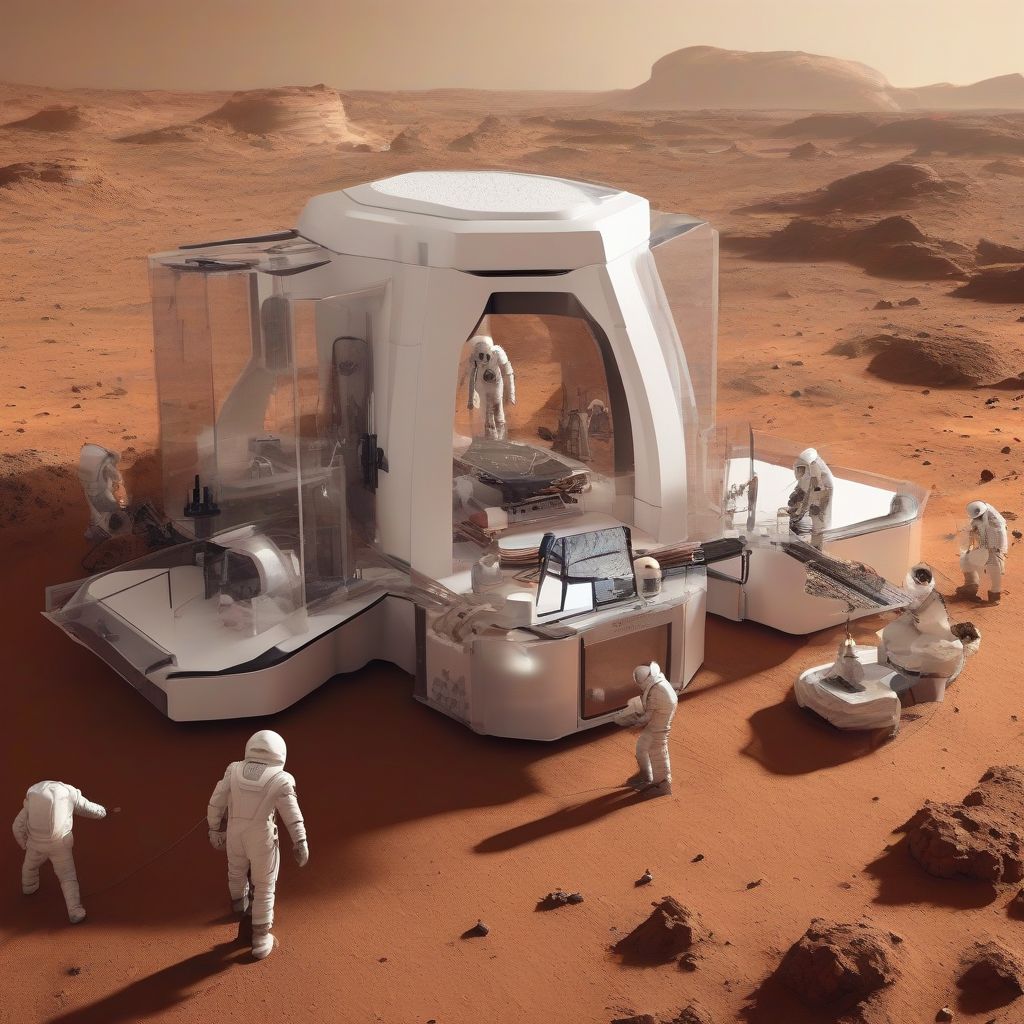Have you ever gazed up at the night sky, stars dusting the velvet darkness, and felt a pull towards the unknown? The desire to explore the cosmos is deeply ingrained in humanity, and recent advances in space travel technology and spacecraft design are bringing us closer than ever to making those dreams a reality.
We’re on the cusp of a new era of space exploration, driven by innovative technologies and daring missions. From reusable rockets dramatically reducing the cost of spaceflight to powerful new telescopes revealing the secrets of distant galaxies, the future of space exploration is brimming with possibility.
Breaking Barriers: Innovations Propelling Us Further
One of the most significant hurdles in space travel has always been cost. Launching anything into orbit is an expensive endeavor. However, companies like SpaceX and Blue Origin are revolutionizing the industry with reusable rockets. These technological marvels can launch payloads into space and return to Earth for a smooth landing, ready to fly again, slashing the cost of spaceflight and opening up new possibilities for exploration.
But it’s not just about getting to space; it’s about what we do when we’re there.
3D Printing in Space: Building a Future Beyond Earth
Imagine constructing structures on the Moon or Mars without having to transport heavy building materials across the vast gulf of space. That’s the promise of 3D printing technology. Researchers are developing advanced 3D printers that can utilize resources found on other celestial bodies, like lunar dust or Martian regolith, to create structures, tools, and even landing pads, paving the way for sustainable human settlements beyond Earth.
 3D Printer on Mars
3D Printer on Mars
Ion Propulsion: A Slow Burn for Long Journeys
While traditional chemical rockets provide a powerful initial thrust, ion propulsion systems offer a highly efficient alternative for long-duration missions. By using electricity to accelerate ions, these engines generate a small but continuous thrust, allowing spacecraft to travel vast distances over time. NASA’s Dawn spacecraft, for example, utilized ion propulsion to travel to and study the dwarf planet Ceres in the asteroid belt, showcasing the potential of this technology for deep-space exploration.
Advanced Life Support Systems: Creating a Home Away from Home
As we venture further into the cosmos, creating self-sustaining environments for astronauts on long-duration missions becomes crucial. Advanced life support systems are being developed to recycle air, water, and even waste, minimizing the need to resupply from Earth. These closed-loop systems are essential for missions to Mars and beyond, ensuring the health and well-being of astronauts during their extended journeys.
Pushing the Boundaries of Spacecraft Design
The spacecraft of tomorrow are being designed not just to withstand the harsh conditions of space, but also to enhance the capabilities of astronauts and scientific instruments.
Inflatable Modules: Expanding Our Horizons in Space
Imagine spacecraft that can expand once they reach space, providing significantly more living and working space for astronauts. That’s the idea behind inflatable modules, a game-changer for spacecraft design. These modules can be compressed for launch and then inflated once in orbit, offering a cost-effective way to increase habitable volume within spacecraft, particularly crucial for long-duration missions where crew comfort and space are paramount.
Autonomous Navigation and Operations: Smarter Spacecraft for Complex Missions
As we send spacecraft further into deep space, the time delay in communication with Earth becomes increasingly challenging. This is where autonomous navigation and operations come into play. Researchers are developing sophisticated software and algorithms that enable spacecraft to make decisions and adjust their trajectory without constant human intervention, crucial for navigating the complexities of deep-space exploration.
Advanced Materials: Building Stronger, Lighter Spacecraft
Every gram launched into space adds to the cost and complexity of a mission. That’s why the development of advanced materials is critical for the future of spacecraft design. Lightweight composites, such as carbon fiber and advanced alloys, offer exceptional strength and durability while significantly reducing overall weight. These materials are paving the way for spacecraft that are not only more fuel-efficient but also capable of withstanding the extreme temperatures and radiation environments of deep space.
[amazon bestseller=”space exploration”]
The Future of Space Exploration: Unlocking the Mysteries of the Universe
The advances in space travel technology and spacecraft design we’re witnessing today are not just incremental improvements; they represent a paradigm shift in our approach to space exploration.
As reusable rockets become the norm, we’ll see a surge in the frequency and ambition of space missions. The commercialization of space travel, already underway, will further accelerate this trend, opening up opportunities for tourism, research, and resource utilization beyond Earth.
But perhaps the most exciting aspect of this new era is the potential for groundbreaking scientific discoveries. With more powerful telescopes, advanced robotics, and the ability to send humans further into space than ever before, we stand on the verge of answering some of humanity’s most profound questions: Are we alone in the universe? How did the universe begin? What are the secrets held by distant planets and galaxies?
The quest to explore the cosmos is a testament to humanity’s boundless curiosity and ingenuity. And with every technological leap forward, we inch closer to unveiling the universe’s awe-inspiring mysteries.
What’s Next?
This is just the beginning. As we continue to push the boundaries of what’s possible, who knows what incredible discoveries await us in the vast expanse of space? One thing is for sure: the future of space exploration is incredibly bright, and it’s a journey we’re all invited to share in.
Let us know in the comments what excites you most about the future of space travel and what you’d like to see explored further. Don’t forget to share this article with fellow space enthusiasts and keep looking up!
